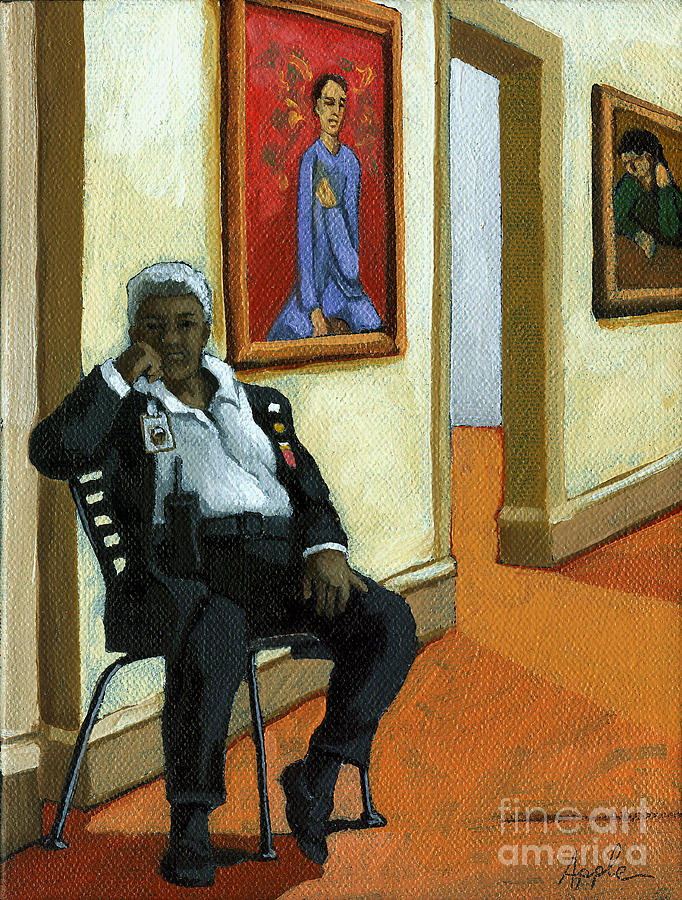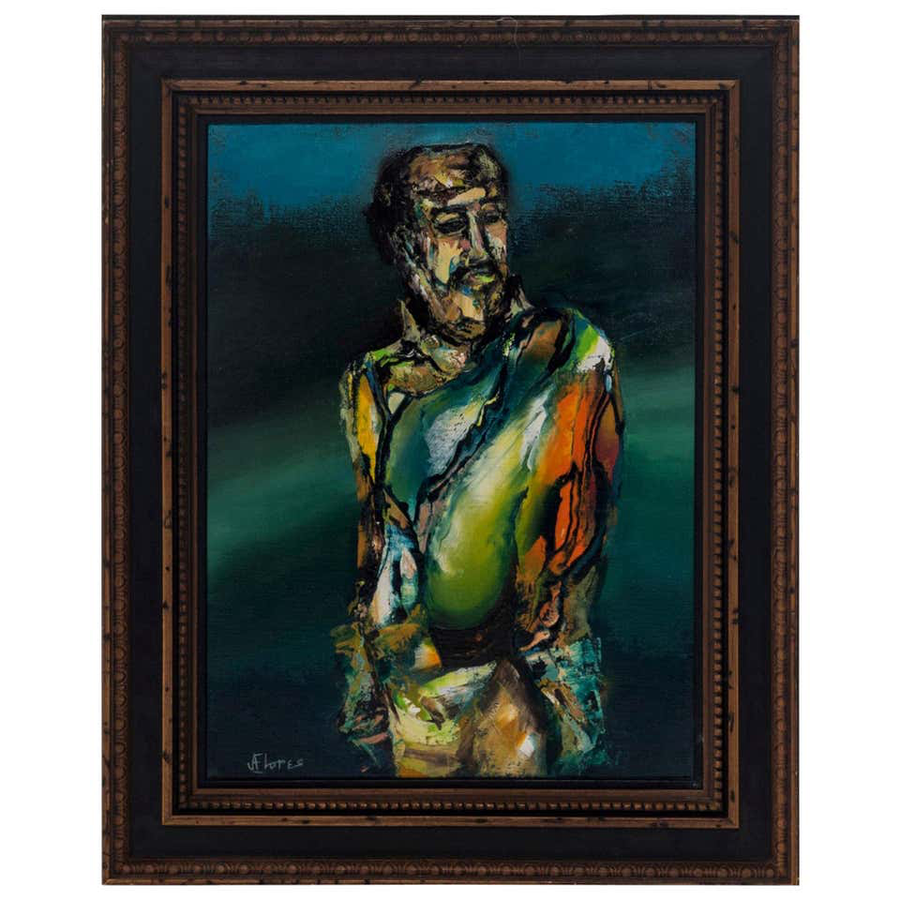Understanding Composition and Color in Figurative Oil Painting
Understanding Composition and Color in Figurative Oil Painting
Blog Article
The Function of Feeling and Expression in Metaphorical Oil Paint: A Thorough Analysis of Topic Matter and Structure
The interaction of feeling and expression in metaphorical oil painting functions as an important lens via which one can take a look at the detailed connection between topic and make-up. Artists harness different methods, from color selection to brushstroke dynamics, to cultivate emotional vibration within their works. This nuanced orchestration not just shapes audience understanding however additionally welcomes a much deeper query into how these aspects coalesce to reflect the complexities of human experience. As we explore this rich terrain, one must take into consideration how details study light up the wider implications of these imaginative choices.
Comprehending Emotion in Art
Emotion in art acts as a powerful conduit for expression, allowing musicians to share complicated sensations with their job. In figurative oil painting, this emotional deepness is frequently portrayed with the representation of the human figure, capturing the subtleties of human experience. The option of subject issue, shade combination, and brushwork all contribute to the psychological vibration of a piece.
Artists often attract upon individual experiences, societal issues, or universal themes to stimulate sensations in the visitor. A picture may show vulnerability, while a vibrant figure in motion can symbolize freedom or chaos. These psychological strings attach the customer to the art work, promoting a discussion that goes beyond the visual medium.
Moreover, the interaction between light and shadow can intensify emotional strength, leading the viewer's gaze and attracting interest to certain components within the structure. Using appearance in oil paint further includes layers of intricacy, inviting a responsive feedback that enhances the emotional experience. Overall, recognizing emotion in art is important for valuing the subtleties that define figurative oil painting, as it changes simple representation right into a profound expedition of the human problem.
Trick Aspects of Structure
In the realm of figurative oil painting, the structure offers as the underlying framework that arranges visual elements and boosts the psychological narrative. Essential parts of structure consist of equilibrium, contrast, prime focus, and rhythm, each adding to the general influence of the artwork.
Balance describes the distribution of visual weight within the paint, which can be attained with unbalanced or in proportion plans. A well-balanced structure offers security, enabling the visitor to engage with the piece sympathetically - figurative oil painting. Contrast, on the other hand, includes comparing different aspects, such as dark and light or cozy and awesome colors, to lead the audience's eye and stimulate psychological responses
The prime focus is critical, as it guides interest to the most significant component of the paint, frequently highlighting the emotional core of the story. Through methods like color saturation or placement, artists can highlight this location successfully. Finally, rhythm concern the rep of components, producing a sense of activity and flow throughout the make-up. By masterfully integrating these key aspects, musicians can craft engaging and psychologically resonant metaphorical oil paintings that astound and involve their audience.
Subject Issue and Its Impact
Subject matter plays a pivotal duty in figurative oil painting, as it not just serves as the structure for the narrative but additionally forms the visitor's analysis and emotional interaction with the art work. The option of subject-- be it a singular figure, a team dynamic, or a thematic depiction-- directly affects the psychological environment communicated to the audience.

For example, portraits frequently stimulate individual links, disclosing the ins and outs of human expression and character, while scenes showing public activities can create a feeling of belonging or fond memories. The historical and social context of the subject matter improves the viewer's understanding, motivating much deeper representations on social norms, values, and the human condition.
Various subjects likewise create varying degrees of interaction; useful site a dramatic dispute portrayed via numbers in tension might elicit feelings of anxiety or compassion, while calm landscapes can conjure Homepage up serenity and consideration. Inevitably, the influence of topic in figurative oil painting is extensive, as it acts as a conduit for psychological resonance, guiding the customer's feedback and interpretation, and fostering a link in between the art work and the viewer. This interaction is important for the effective communication of the musician's intent.
Techniques for Evoking Feelings
The effectiveness of metaphorical oil paint in conveying emotions is substantially affected by the techniques utilized by the artist. Among the most crucial methods is the usage of color concept, where the strategic selection of colors can stimulate details emotional actions. Warm colors, such as oranges and reds, usually generate feelings of interest or aggression, while cooler tones like blues and eco-friendlies often tend to evoke peace or despair.
Another important method is the manipulation of light and darkness, referred to as chiaroscuro. This approach improves the three-dimensionality of figures, developing significant contrasts that can escalate psychological depth. The placement of light can lead audiences' emotions, highlighting specific aspects of the structure.
Brushwork additionally plays a crucial function; loose, meaningful strokes can convey power and spontaneity, whereas smoother strategies may recommend peace or precision. Additionally, the arrangement of subjects within the composition can affect emotional effect. Close distance can suggest intimacy, while range might suggest isolation.
Ultimately, the combination of these methods allows artists to craft narratives that resonate with the viewer, changing a plain visual experience into an evocative psychological trip. - figurative oil painting

Study of Significant Functions
Analyzing remarkable jobs of figurative oil paint discloses exactly how numerous methods are used to stimulate powerful feelings. One excellent situation is Edvard Munch's "The Scream," where the altered number and swirling background communicate existential dread. Munch's use shade-- vibrant oranges and deep blues-- helpful resources escalates the psychological influence, showcasing how scheme options can shape visitor experience.
One more significant work is Pablo Picasso's "Les Demoiselles d'Avignon." Right here, fragmented forms and strong brushstrokes mirror a turbulent emotional landscape, testing traditional depictions of the women figure. Picasso's ingenious make-up not only records the customer's attention but additionally welcomes reflection on motifs of identity and sexuality.
In Addition, Frida Kahlo's "The 2 Fridas" provides a poignant expedition of duality and self-identity. The contrasting numbers, connected by a shared heart, exemplify Kahlo's psychological deepness and personal narrative. figurative oil painting. Her precise attention to detail and symbolic components serve to engage visitors on a natural degree
These situation researches underscore the profound connection in between emotion and composition in figurative oil paint, disclosing how musicians harness method to interact complex feelings and narratives that resonate across time and culture.

Final Thought
Finally, the interaction of feeling and expression in figurative oil painting dramatically boosts the customer's experience and analysis of the art work. Via a careful selection of subject matter and compositional methods, artists communicate extensive narratives that reverberate on both personal and global levels. The application of shade concept, chiaroscuro, and brushwork more intensifies psychological deepness, transforming each canvas into an effective reflection of the intricacies of the human experience.
In metaphorical oil paint, this psychological depth is commonly represented with the depiction of the human figure, catching the subtleties of human experience.In addition, the interplay in between light and shadow can intensify emotional intensity, guiding the viewer's gaze and drawing interest to certain elements within the make-up. The usage of appearance in oil painting better includes layers of complexity, welcoming a responsive feedback that enhances the emotional experience.The focal point is critical, as it guides interest to the most substantial component of the painting, commonly highlighting the emotional core of the narrative. Ultimately, the influence of subject issue in figurative oil paint is extensive, as it serves as an avenue for emotional vibration, assisting the audience's response and interpretation, and promoting a link between the art work and the viewer.
Report this page